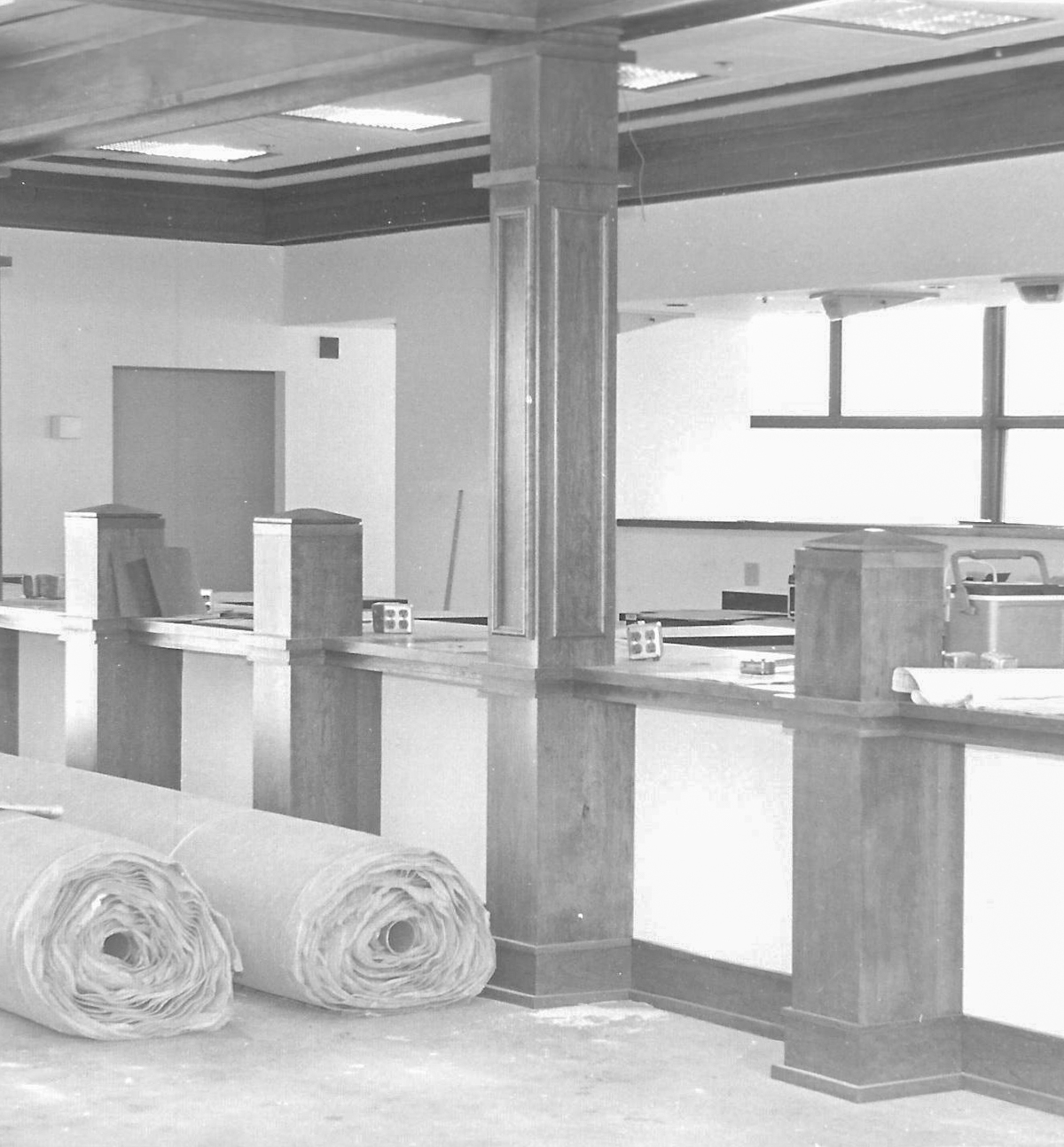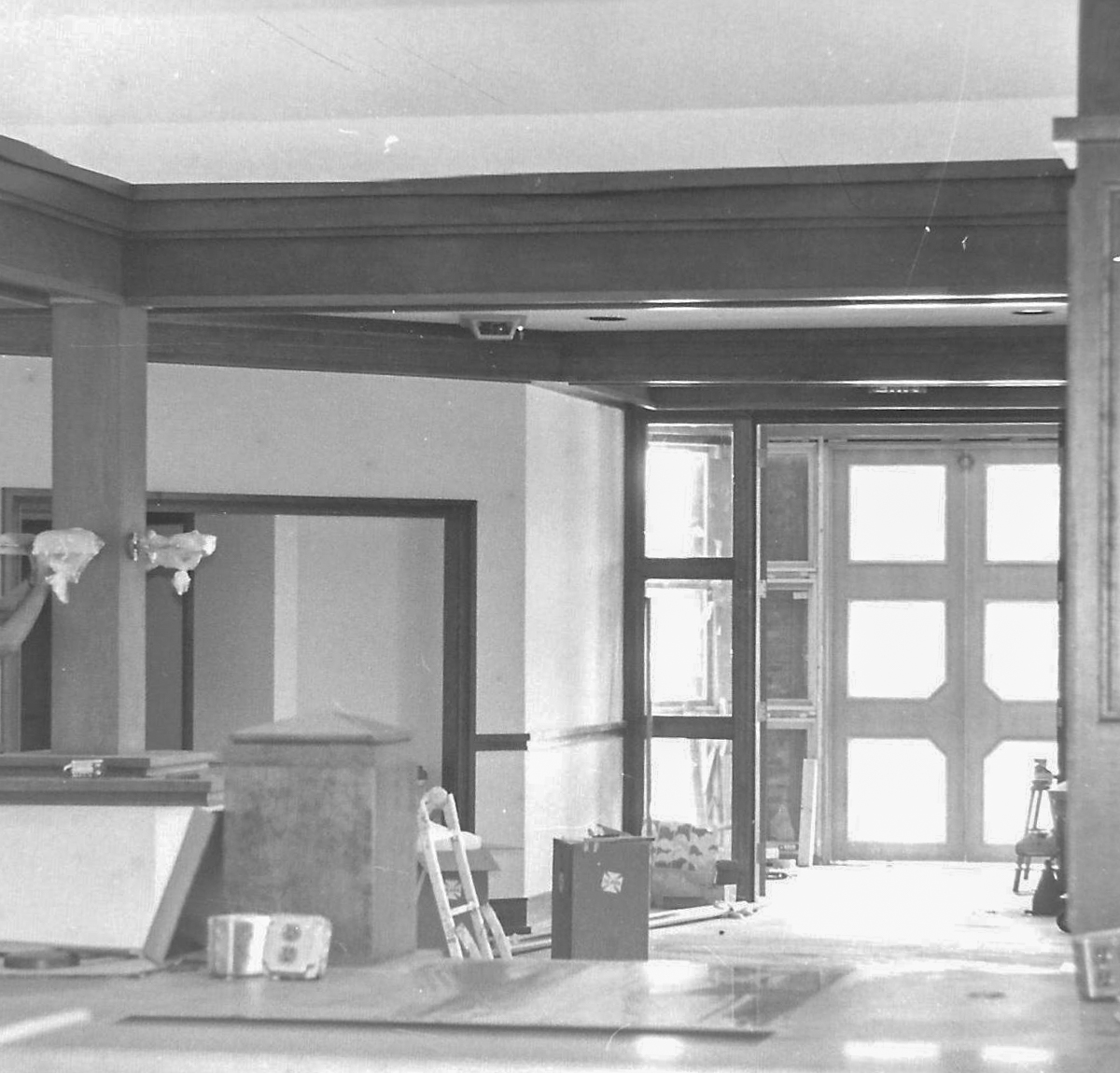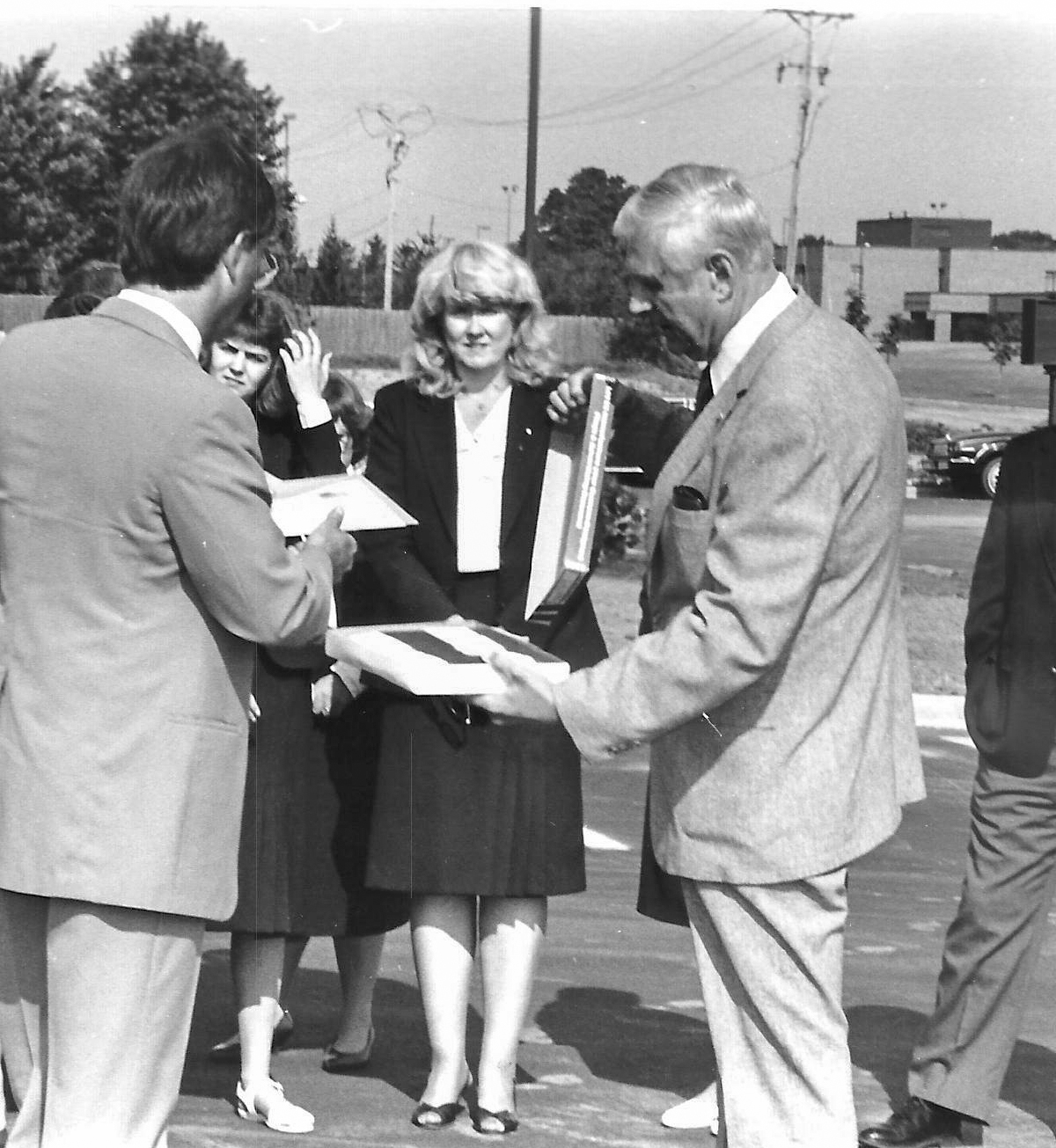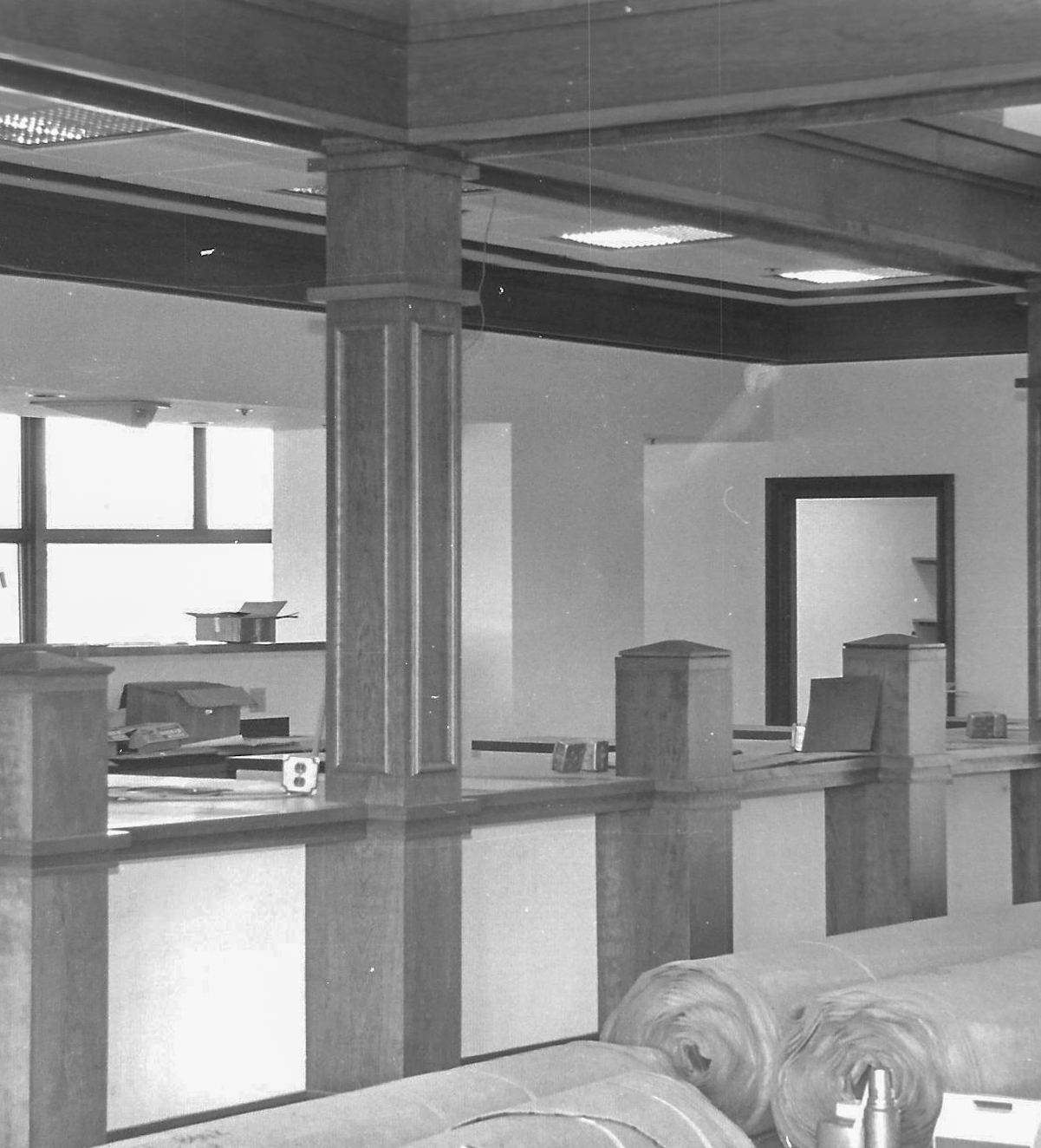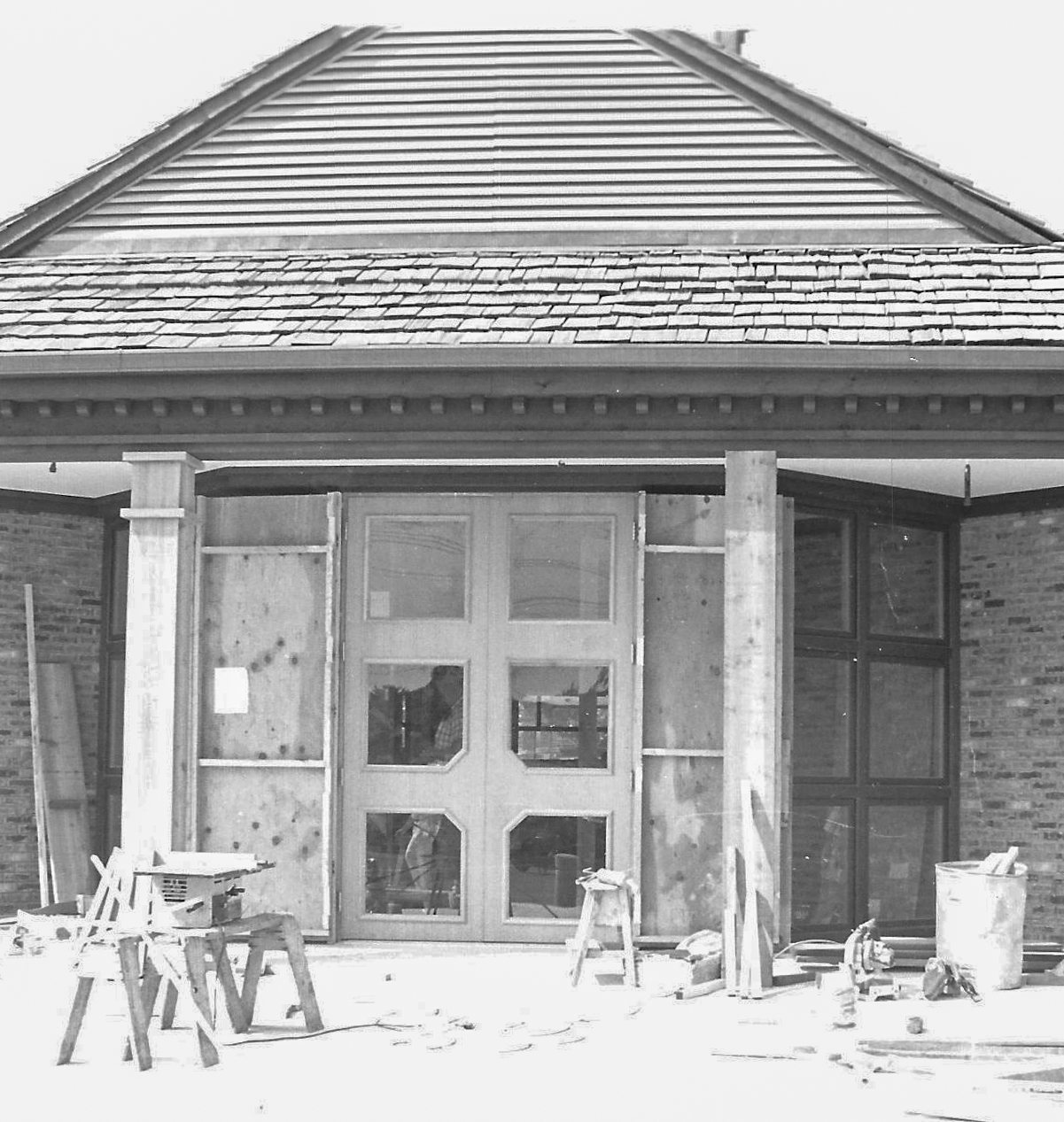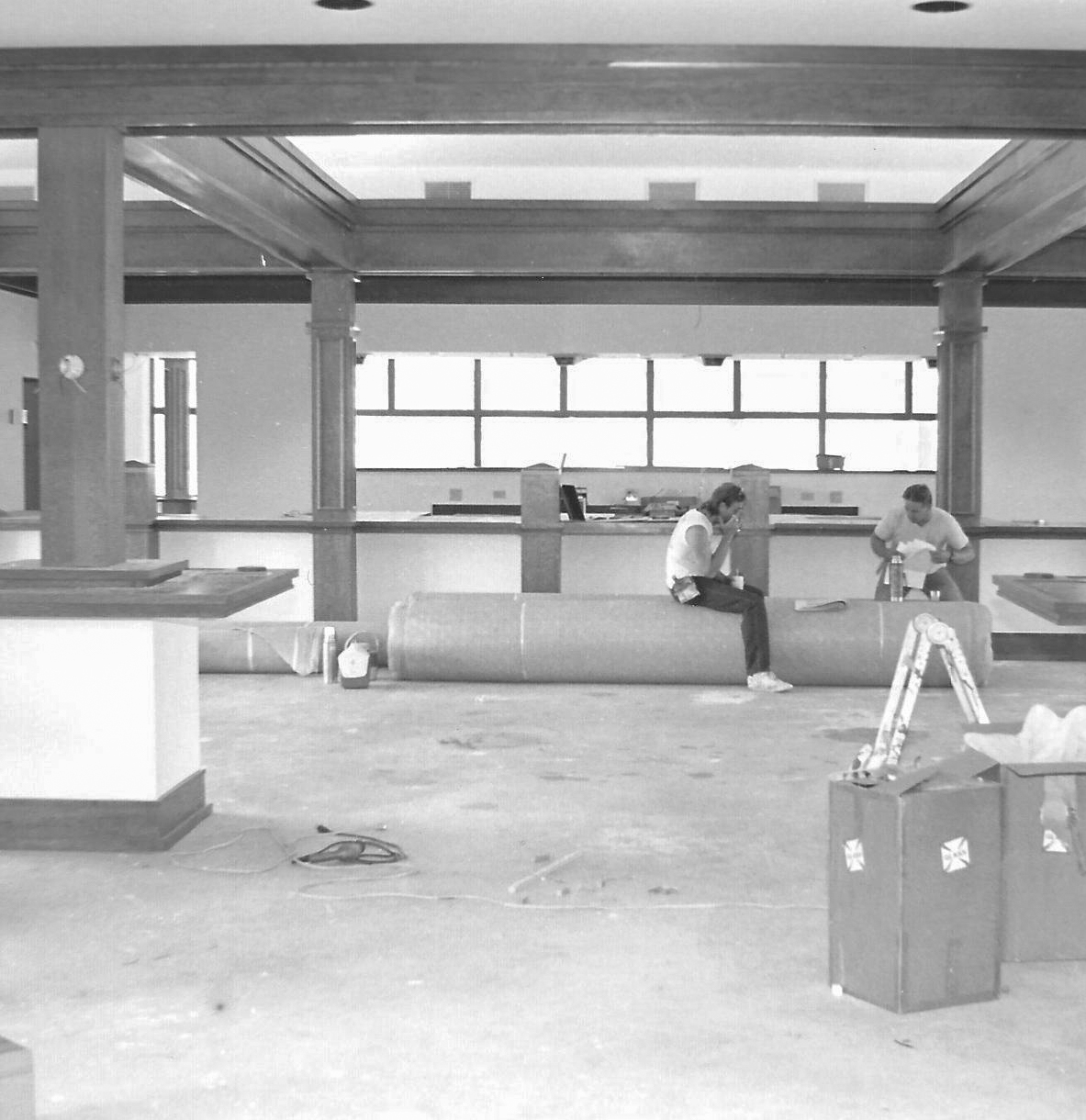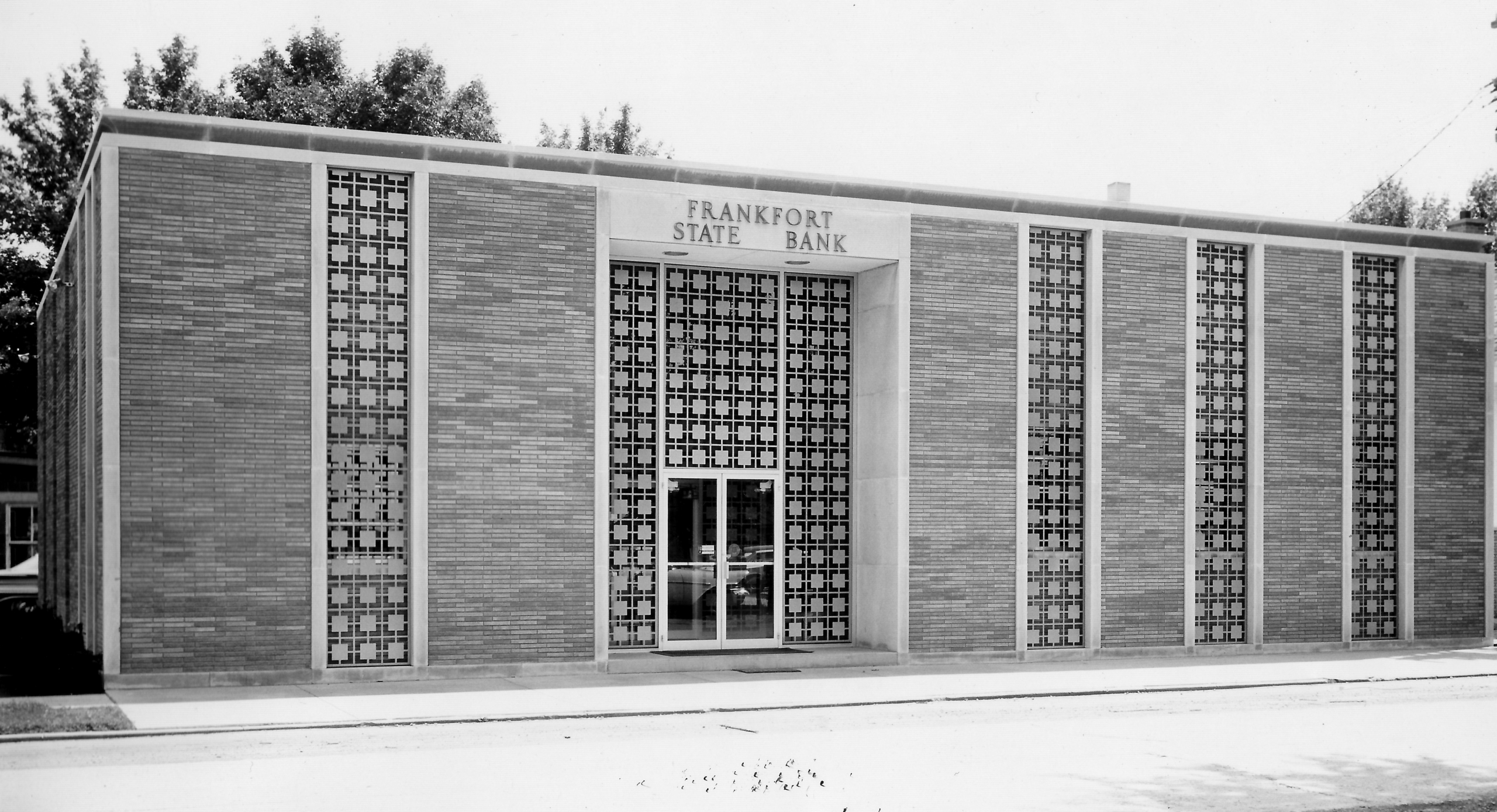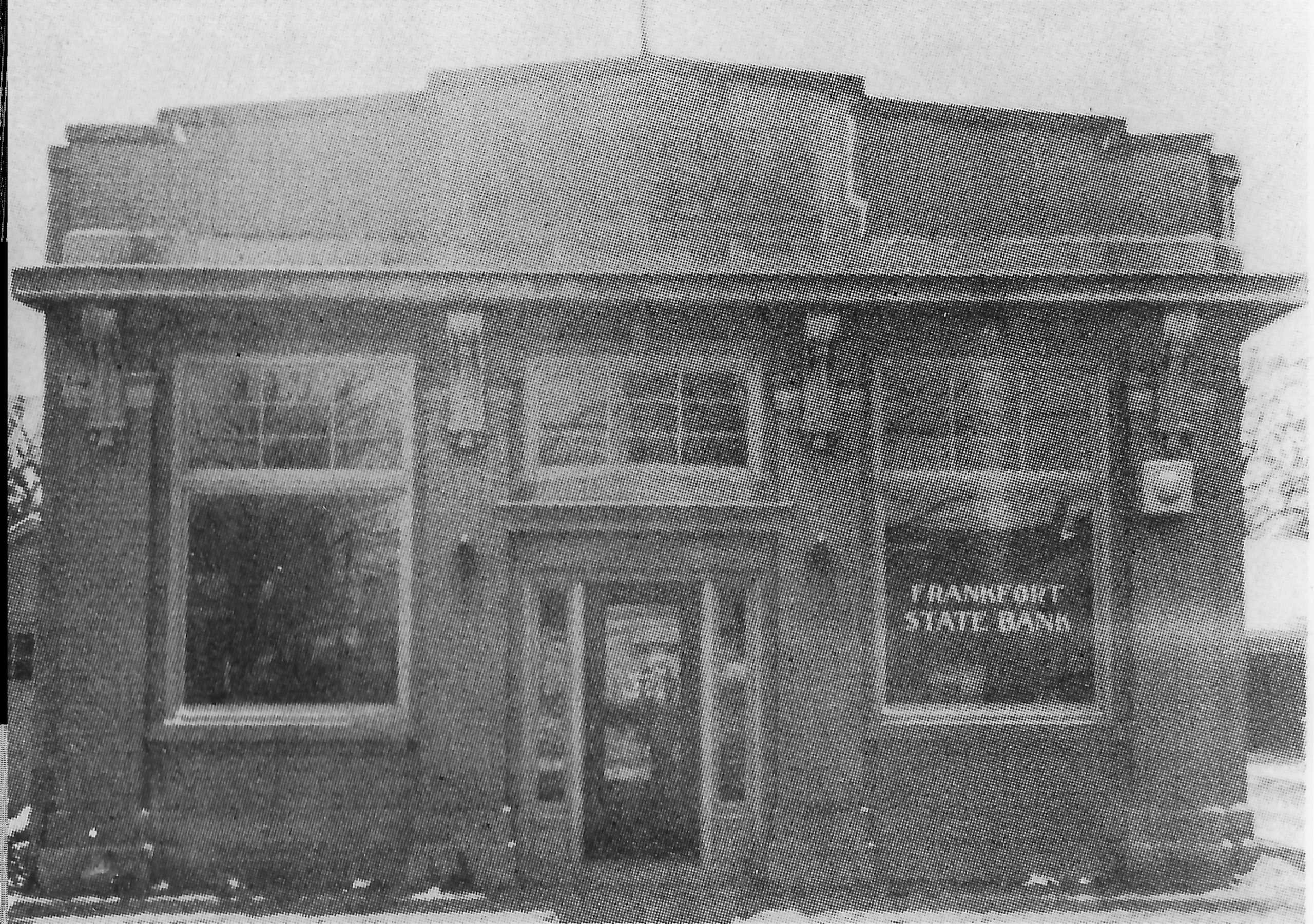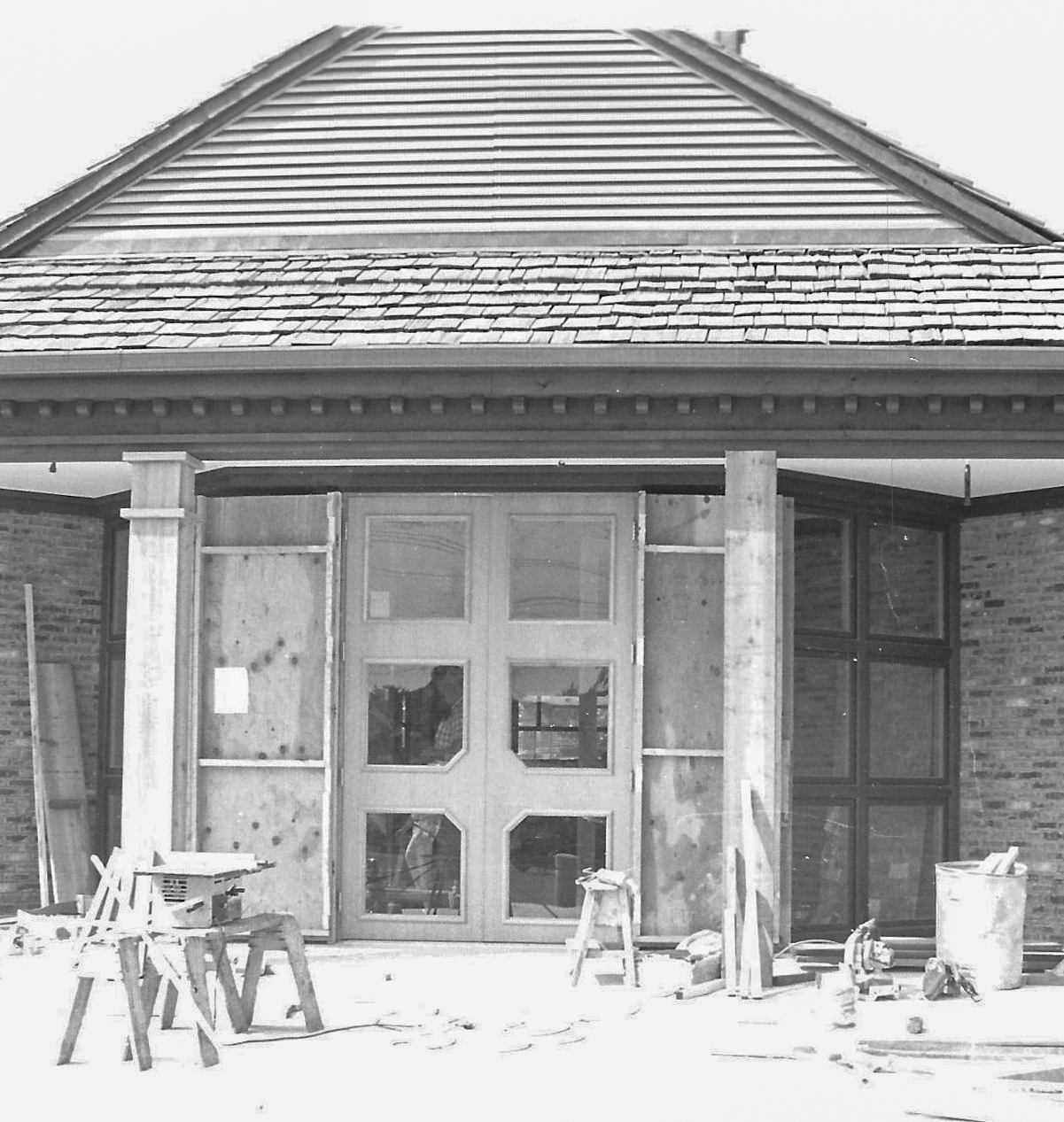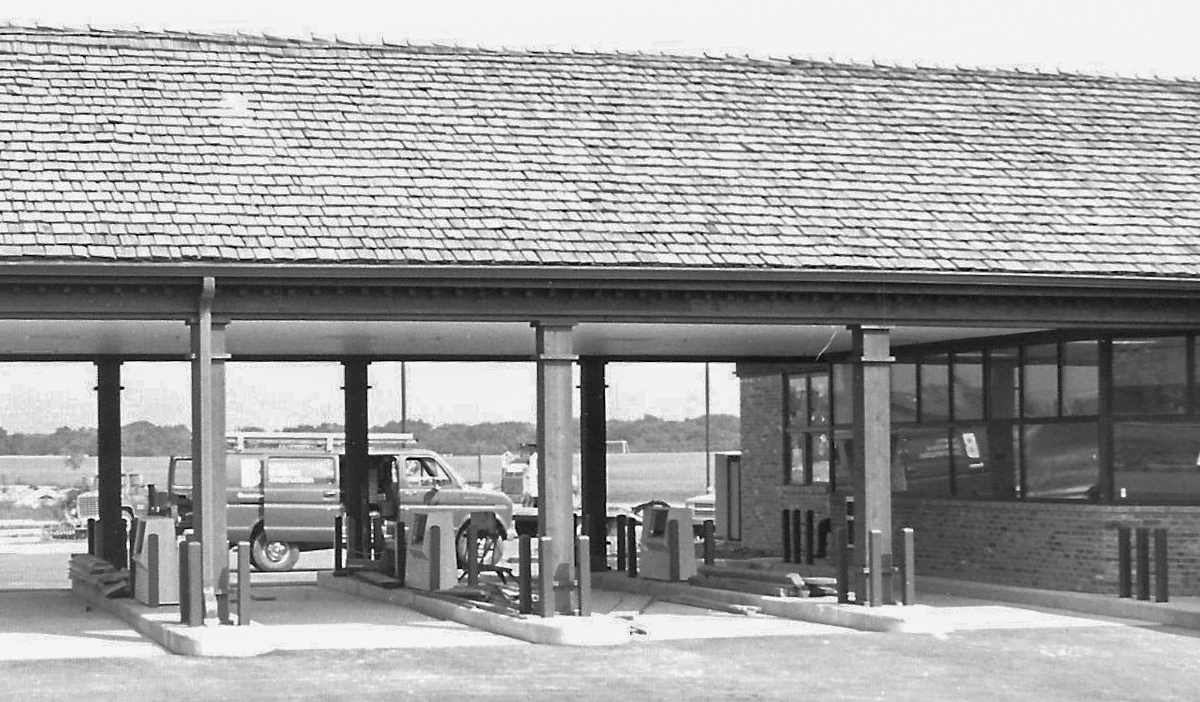First Bank of Frankfort

Frankfort isn’t a community known for bank robberies, but it has had a few memorable heists in its history.
Constable Ernie Mueller was shot and killed after questioning the robbers of Citizens Bank in 1924. In the late 1960s, Frankfort State Bank at the corner of Ash and Nebraska streets was robbed, and the TCF Bank (formerly on LaGrange Road) was robbed three times between 2001 and 2005.
Most recently, there was the robbery of LaSalle Bank (now ) on the corner of Lincolnway Lane and LaGrange Road, a mere 200 yards from the Frankfort Police Department.
“I was sitting in my office,” said Chief John Burica who was a commander at the time, “and I heard the call come in that LaSalle Bank had just been robbed, and the offender was exiting in a cab. I turned and looked out my window and saw the taxi.”
However, was just letting out, and the taxi got stuck in traffic, allowing a nearby officer to promptly arrest the robber. The poor cab driver had no idea what was going on, Burica said. The offender had requested pick up from the Frankfort Terrace Nursing Home and then told the driver he needed to go to the bank, and the driver complied.
Although colorful, these incidences aren’t nearly as explosive as the village’s first bank robbery in 1899.
The Unlikely Legend of ‘Dago Frank’
At the turn of the 20th century, the vault in the Exchange Bank in Frankfort was blown open by Jerome Berry, aka “Dago Frank” Spaulding, and his gang of five bank robbers, who escaped just before dawn down the Michigan Central tracks (now Old Plank Trail).
According to newspaper clippings from 1899 and 1903, Constable William Knippel, who still has family in the area, was “inveigled” (go look it up, I did) by several members of the gang to approach the railroad depot where he investigated their suspicious behavior, resulting in Knippel’s immediate capture on the evening of Sept. 15, 1899.
Said a local paper of the time: “The desperadoes took the watchman to an empty box car some distance down the track and there placed a cob in his mouth and tied it in with a large red handkerchief which they had purchased in town that day.”
Unfortunately, the red handkerchief would be their undoing, as it was later used as evidence in the trial to identify the thieves as both the purchasers and the bank robbers.
After disposing of the lawman, “Dago Frank” and his gang moved west down Kansas Street to the Exchange Bank, 114 Kansas St. Frank was a “yeg man” (i.e. safeblower) with a reputation that preceded him.
” ‘Dago Frank’ is not of the nationality that his alias would indicate. He is a New England Yankee and about as tough a proposition as ever plied the bandit’s profession … ‘Dago Frank’ is a highwayman without fear or scruples,” said another local paper in 1903.
A Less-than-Perfect Crime
Frank’s plan did not go as smoothly as anticipated, however. It took him three tries to blow the vault with nitroglycerin, waking up the Green family who lived in an apartment over the bank. Threatened with their lives to keep quiet or else, the Greens were guarded by two gunmen while two more stood watch outside the bank.
Finally breaking through, Frank and his men stole about $1,800 in cash and headed for the railroad tracks that ran parallel to Kansas Street. All six piled aboard a handcar and pumped their way west toward Joliet, making a clean getaway.
“When the members of the family recovered from their fright, the alarm was sounded, and in a few minutes the town was aroused. The town marshal was found, and he told all he knew about the daring deed,” a local paper reported Sept. 16, 1899.
Captured in Wisconsin
“Dago Frank” and his gang apparently headed north from Joliet where Frank, if not the others, ran out of luck and was caught and thrown in prison in Wisconsin for bank robbery. Upon his release in Wisconsin in October 1903, he was taken into custody by Will County officials, tried and found guilty of robbing the Exchange Bank in 1899.
“Next to ‘Toronto Jimmie,’ Spaulding is perhaps the best-known and most feared of all the ‘yeg’ men or safeblowers in the middle west, and the indications are that his vocation will be dropped for several years by the time the Will County authorities are through with him,” concluded a local source.
Thanks to the Frankfort Area Historical Society and Mary Knippel, wife of the late Constable Knippel’s grandson, for providing Frankfort Patch with copies of original newspaper clippings and other sources detailing the robbery.


